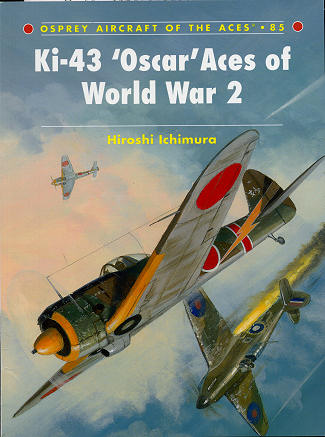 While the
A6M was being developed for the Japanese Navy, on the Army side of things, the
Ki-27 was being replaced by the Ki-43. This was a more modern aircraft with
retractable landing gear that still maintained much of the maneuverability of
the older fixed wing fighter, but at a cost. In order to keep the weight down,
Nakajima had to lighten many areas of the airframe. Unfortunately, this caused
quite a bit of structural weakness that was not immediately spotted during
flight testing.
While the
A6M was being developed for the Japanese Navy, on the Army side of things, the
Ki-27 was being replaced by the Ki-43. This was a more modern aircraft with
retractable landing gear that still maintained much of the maneuverability of
the older fixed wing fighter, but at a cost. In order to keep the weight down,
Nakajima had to lighten many areas of the airframe. Unfortunately, this caused
quite a bit of structural weakness that was not immediately spotted during
flight testing.
The Ki-43 was first used in action in Southeast Asia where
the first unit, the 64th Sentai, was sent to cover the Army assaults on Malaya
and Burma. It was here that the aircraft's weakness, a tendency for the wing
spar to break and the wings to fold during high 'G' maneuvers was discovered.
Despite being able to sweep the sky clear of Allied fighters, and rather weak
main armament, the Ki-43 killed several promising pilots early in their careers,
including several top scoring aces. While the problem was eventually fixed,
older Ki-43s were not retrofitted with the stronger wings and continued to
plague pilots.
In Osprey's 85th 'Aces' book, the lives and missions of those
who achieved ace status while flying the Ki-43 are documented. Researching
Japanese WWII subjects is not that easy as much of the historical record of the
period was destroyed by the Japanese at war's end. However, through surviving
archives and personal photos, the author was able to piece together a good look
at the men who had such success with the aircraft. Not surprisingly, most of the
success came in the first year of the war when the Oscar was still an effective
aircraft against the older types of the Allies. Though still able to do a lot of
damage in the hands of an experienced pilot, by the end of the war, the Ki-43
was an obsolescent type and pilots were not as skilled as at the beginning of
the conflict.
Full of photos of the aircraft and their pilots, we can see
how these men did as the lr carried on. As with all of Osprey's 'Aces' books,
there are several pages of color profiles of their planes as well as a table of
the aces and their eventual fate.
It is an excellent look at a subject that has a lot of
interest to many people and one that I know you will enjoy.
April 2009
For more on the complete line of Osprey books,
visit www.ospreypublishing.com. In the US, it is
Osprey Direct at 44-02 23rd St, Suite 219, Long Island City, NY 11101., where you can
get a catalogue of available books.
If you would like your product reviewed fairly and quickly, please contact
me or see other details in the Note to
Contributors.
 While the
A6M was being developed for the Japanese Navy, on the Army side of things, the
Ki-27 was being replaced by the Ki-43. This was a more modern aircraft with
retractable landing gear that still maintained much of the maneuverability of
the older fixed wing fighter, but at a cost. In order to keep the weight down,
Nakajima had to lighten many areas of the airframe. Unfortunately, this caused
quite a bit of structural weakness that was not immediately spotted during
flight testing.
While the
A6M was being developed for the Japanese Navy, on the Army side of things, the
Ki-27 was being replaced by the Ki-43. This was a more modern aircraft with
retractable landing gear that still maintained much of the maneuverability of
the older fixed wing fighter, but at a cost. In order to keep the weight down,
Nakajima had to lighten many areas of the airframe. Unfortunately, this caused
quite a bit of structural weakness that was not immediately spotted during
flight testing.